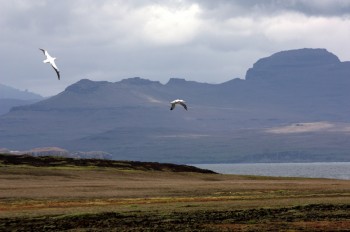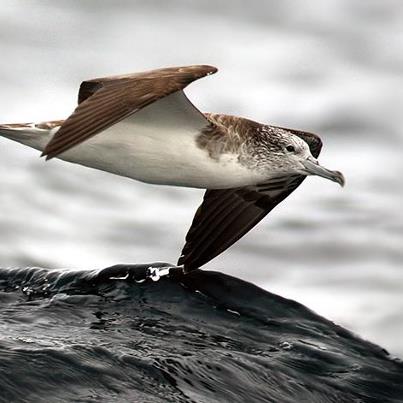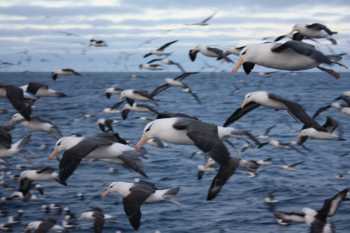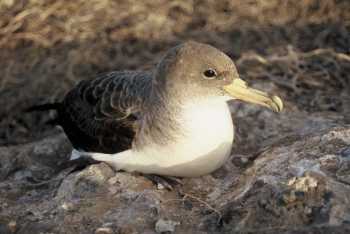Alice Carravieri (Centre d’Etudes Biologiques de Chizé, Villiers-en-Bois, France) and colleagues publish in the journal Environmental Pollution on mercury contamination in the Wandering Albatross Diomedea exulans and other sub-Antarctic albatrosses and petrels.
The paper’s abstract follows:
Mercury (Hg) contamination poses potential threats to ecosystems worldwide. In order to study Hg bioavailability in the poorly documented southern Indian Ocean, Hg exposure was investigated in the large avian community of Kerguelen Islands. Adults of 27 species (480 individuals) showed a wide range of feather Hg concentrations, from 0.4 ± 0.1 to 16.6 ± 3.8 µg g-1 dry weight in Wilson’s storm petrels and wandering albatrosses, respectively. Hg concentrations increased roughly in the order crustacean- < fish- ≤ squid- ≤ carrion-consumers, confirming that diet, rather than taxonomy, is an important driver of avian Hg exposure. Adults presented higher Hg concentrations than chicks, due to a longer duration of exposure, with the only exception being the subantarctic skua, likely because of feeding habits’ differences of the two age-classes in this species. High Hg concentrations were reported for three species of the poorly known gadfly petrels, which merit further investigation.”

Wandering Albatrosses fly over Kerguelen Island, photograph by Maite Louzao
Click here for a related publication.
Reference:
Carravieri, A., Cherel, Y., Blévin, P., Brault-Favrou, M., Chastel, O. & Bustamante, P. 2014. Mercury exposure in a large subantarctic avian community. Environmental Pollution 190: 51-57.
For the complete manuscript click here.
John Cooper, ACAP Information Officer, 11 May 2014

 English
English  Français
Français  Español
Español 


